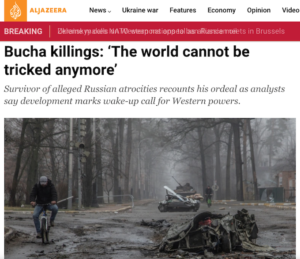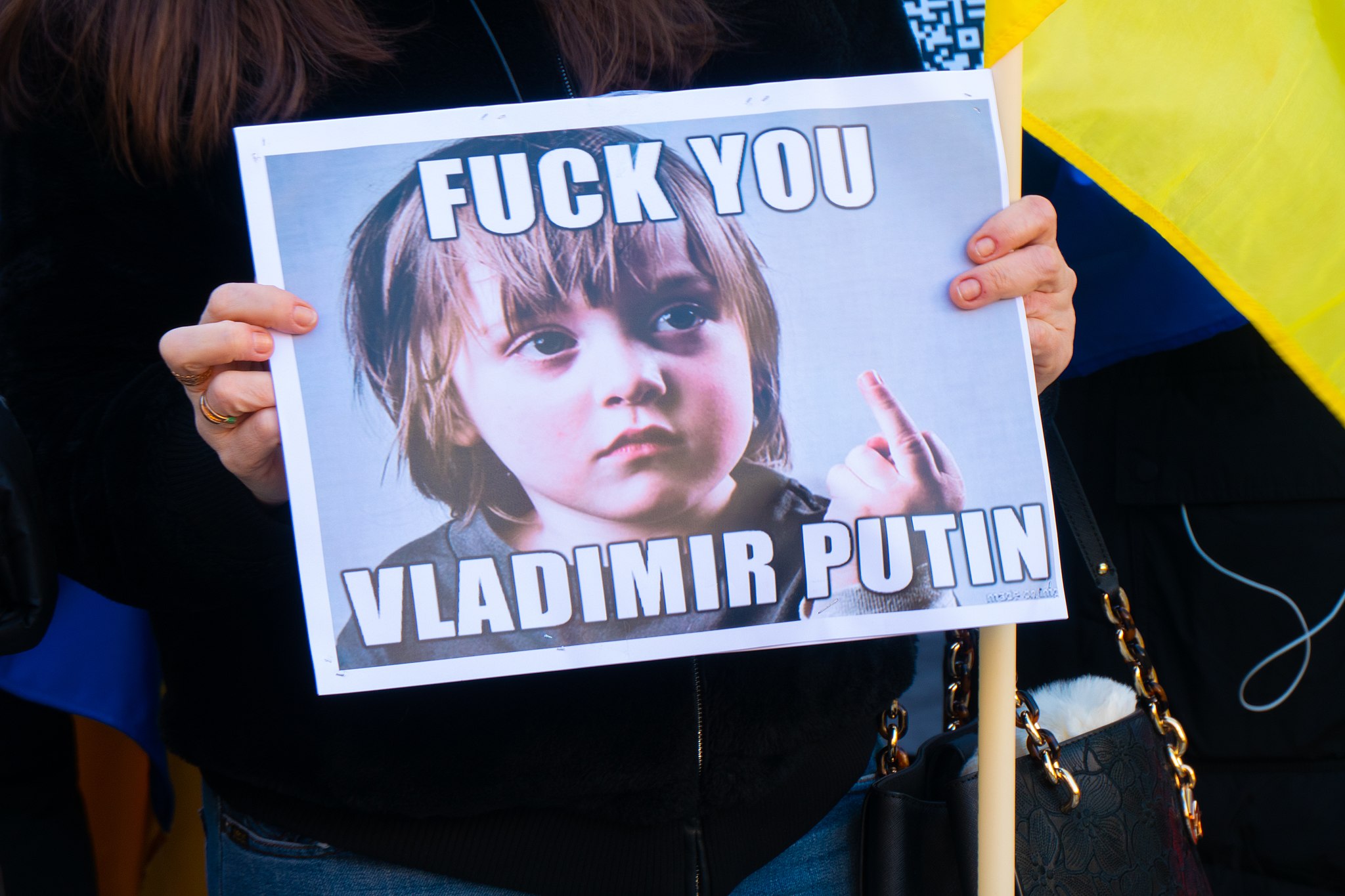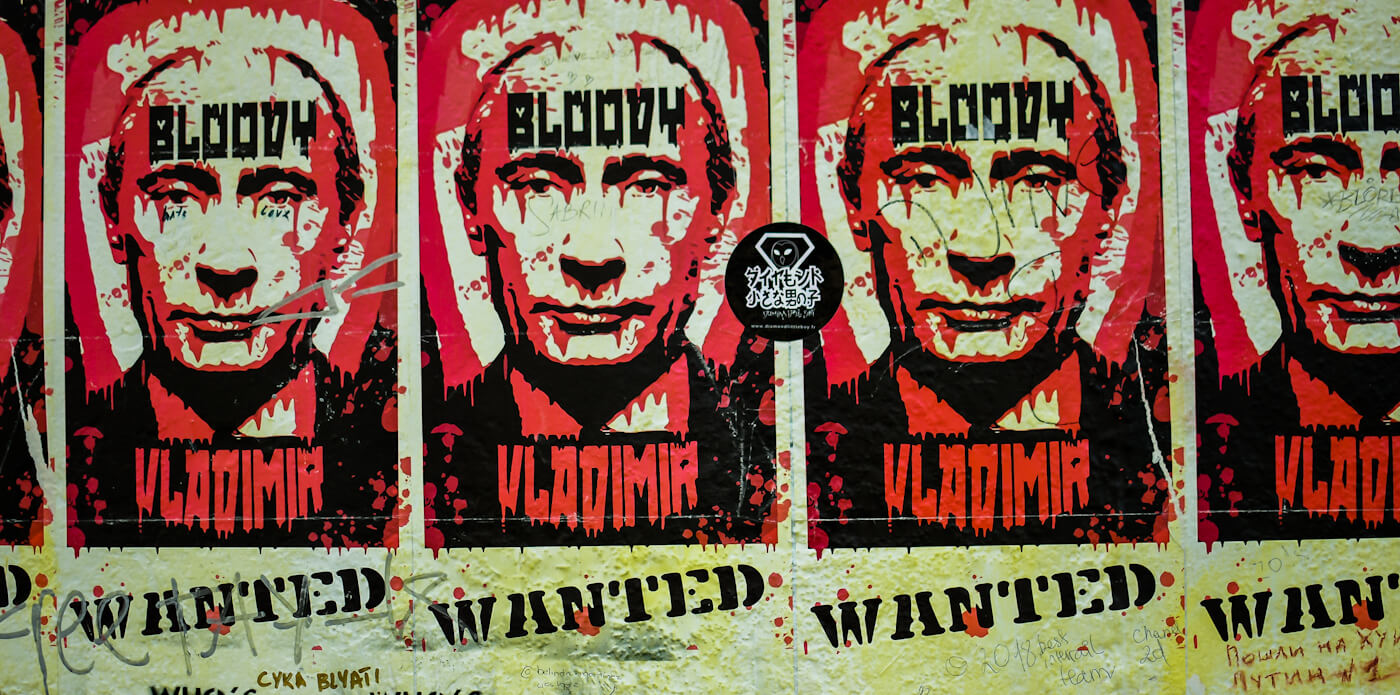
In 1990, Tom Cruise, star of the 1986 blockbuster, ‘Top Gun’, said:
Some people felt that “Top Gun” was a right-wing film to promote the Navy. And a lot of kids loved it. But I want the kids to know that’s not the way war is – that “Top Gun” was just an amusement park ride, a fun film with a PG-13 rating that was not supposed to be reality. That’s why I didn’t go on and make “Top Gun II” and “III” and “IV” and “V.” That would have been irresponsible.
It would indeed, and one can only admire Cruise’s honesty and selfless determination… in 1990… not to mislead young people.
Why, then, 32 years later, would Cruise decide to appear in ‘Top Gun: Maverick’? The Daily Mail provides a clue:
The 59-year-old superstar was “only” paid $13million, although he will also earn a percentage of every dollar taken at the global box office. He made $100million for the original Mission: Impossible film – and could earn even more if Top Gun: Maverick is a box office smash.
Which it is already. Associated Press reports:
Top Gun: Maverick” has already grossed $548.6 million worldwide, making it easily one the biggest hits of Cruise’s career.
His earlier refusal to be ‘irresponsible’ was in response to claims that Cruise’s bright, shining film was, in reality, a propaganda fecalith expelled from the bowels of ‘the Military-Entertainment Complex’. Thus, director Oliver Stone, in 1998:
“Top Gun,” man – it was essentially a fascist movie. It sold the idea that war is clean, war can be won … nobody in the movie ever mentions that he just started World War Three!’
In 1986, Time magazine reported that for the cost of just $1.8 million, the US Department of Defense allowed the Top Gun producers ‘the use of Miramar Naval Air Station’ as well as ‘four aircraft carriers and about two dozen F-14 Tomcats, F-5 Tigers and A-4 Skyhawks, some flown by real-life Top Gun pilots’.
The Washington Post reports:
It’s unlikely the film could have gotten made without the Pentagon’s considerable support. A single F-14 Tomcat cost about $38 million. The total budget for “Top Gun” was $15 million.
It wasn’t Catch-22, but there was a catch: in exchange for this lavish military support, the producers agreed to let the US Department of Defense make changes to the script. The changes were substantial but trivial compared to the real issue missed by almost all ‘mainstream’ journalists; namely, that the US war machine would not have spent millions of dollars subsidising a movie unless the core themes of the story provided a powerful propaganda service to the US war machine. And such, indeed, was the case:
The film conquered the box office, as well as the hearts and minds of young Americans. Following its release, applications to become Naval Aviators reportedly jumped by 500 percent. To capitalize on the craze, some enterprising Navy recruiters even set up stands outside theaters.
Time summed it up:
The high-flying hardware turns Top Gun into a 110-minute commercial for the Navy – and it was the Navy’s cooperation that put the planes in the picture.
No surprise, then, as The Washington Post reported:
Top Gun” (1986), turned out to be so influential it set the blueprint for a new kind of corporate movie product fusing Hollywood star power with the U.S. military’s firepower. Think “Black Hawk Down,” “Transformers” or “American Sniper.”
Donald Baruch, the Pentagon’s special assistant for audio-visual media, commented that the US government ‘couldn’t buy the sort of publicity films give us’. In reality, they do, in effect, buy this publicity:
Before a producer receives military assistance for a TV or movie project, the screenplay is reviewed by officials at the Department of Defense and by each of the services involved. The Pentagon ends up rejecting many projects that come its way on the grounds that they distort military life and situations.
Movies critical of the military will be difficult to make,” says former Navy Lieut. John Semcken, who served as the liaison on Top Gun.
The War Zone website provides some details behind military backing for the new, follow-up film, ‘Top Gun: Maverick’:
The War Zone obtained the official production assistance agreements, 84 pages in total, in response to a Freedom of Information Act (FOIA) request to the Office of the Secretary of Defense…
The documents confirm that filming was conducted on location at Naval Base Coronado, Naval Air Station (NAS) Fallon, NAS Lemoore, Naval Air Facility (NAF) El Centro, Naval Air Weapons Station (NAWS) China Lake, and Naval Air Station (NAS) Whidbey Island. Fallon is home to the Navy’s real-life Topgun program.’
How many aircraft carriers were thrown in?
The Nimitz class aircraft carriers USS Abraham Lincoln and Theodore Roosevelt were also made available. Some filming even took place inside Roosevelt’s Combat Direction Center, which is the ship’s nerve center.
The War Zone adds:
Two different agreements say that the Navy was expected to provide between four and 12 actual F/A-18 fighters for film, “dependent on availability of aircraft.” There is at least one scene in the trailers that have been released so far showing a row of these jets, including one wearing a special paint job created specifically for the movie.
In addition, the Navy was to “allow for the internal and external placement of the Production Company’s cameras on F/A-18 E/F Super Hornets and Navy helicopters with the approval of the Naval Air Systems Command (NAVAIR).
And:
There are some details about set construction in various locations, including the complete transformation of a hangar and squadron spaces belonging to Fleet Logistics Support Squadron 30 (VRC-30) at NAS North Island, part of Naval Base Coronado, for the movie.
While the recent, 75th Cannes film festival banned any official delegations or reporters from Russia, ‘Top Gun: Maverick’ was massively promoted. The Ukrainian president Volodymyr Zelensky addressed the gala opening of the festival on a huge screen via a video link from Kyiv. Drawing heavily on Charlie Chaplin’s classic film, The Great Dictator (1940), Zelensky said:
If there is a dictator, if there is a war for freedom, once again, everything depends on our unity. Can cinema stay outside of this unity?
Quoting directly from Chaplin’s anti-war speech at the end of the film, Zelensky said:
In the end, hatred will disappear and dictators will die.
On The World Socialist Website, Stefan Steinberg responded:
The Ukrainian president’s duplicitous speech was then given a standing ovation by the well-heeled audience of film celebrities, super-models, media figures and critics gathered at the festival’s Grand Théâtre Lumière…
Zelensky, whose government’s promotion of unfettered free market capitalism and extreme nationalism includes full support for the notorious fascist Azov battalion, and his US-NATO backers stand for everything that Chaplin abhorred. In fact, what would a Chaplin make out of the self-satisfied rubbish about “poor, defenseless little Ukraine,” armed to the hilt and financed by the biggest imperialist robbers on the planet?
The Independent reports that the ‘Top Gun: Maverick’ film has come at just the right time:
In April, state senators were told how the US army faced a “war for talent” amid shrinking battalion numbers, echoing admissions from air force officials that its own pool of qualified candidates had fallen by half since the beginning of Covid. Things haven’t looked rosy for the navy either, which declared in February that it was 5,000 to 6,000 sailors short at sea. ..
Little wonder, then, that Uncle Sam once again welcomed Paramount Pictures with open arms for Maverick, granting director Joseph Kosinski and his crew all-access passes to highly sensitive naval facilities, including a Nimitz-class nuclear-powered aircraft carrier. World-class technicians provided cast members with top-level fighter pilot training right down to seat ejection…
Happily, press reports inform us:
The US Navy is [again] setting up “recruiting stations” in cinema foyers across America. After the first film there was a 50 per cent increase in applications to join the Navy’s fighter programme. A spokesman said: “Obviously we are hoping for the same outcome this time around.”
If any readers notice any journalists asking Tom Cruise if he still wants ‘the kids to know that’s not the way war is’, that ‘Top Gun’ is just an amusement park ride’ that is ‘not supposed to be reality’, and that it would be ‘irresponsible’ to make ‘Top Gun III’ and ‘IV’ and ‘V’ – do let us know (gro.snelaidemnull@rotide).
The Guardian’s Mark Kermode – ‘I Give Up’
Given the military involvement in both ‘Top Gun’ films and the massive impact of the first film on US military recruitment, a natural concern for anyone reviewing the new film would seem to be the role of the US military since 1986.
A really salient fact about the world since the mid-eighties, as we all know – as our newspaper front pages, echoing ‘Top Gun’ heroics, never tire of telling us – is that the US has been relentlessly bombing countries like Serbia, Panama, Afghanistan, Iraq, Libya, Syria, Somalia and Pakistan ever since. In 2015, a study by Physicians for Global Responsibility reported:
The purpose of this investigation is to provide as realistic an estimate as possible of the total body count in the three main war zones Iraq, Afghanistan and Pakistan during 12 years of “war on terrorism”. An extensive review has been made of the major studies and data published on the numbers of victims in these countries… This investigation comes to the conclusion that the war has, directly or indirectly, killed around 1 million people in Iraq, 220,000 in Afghanistan and 80,000 in Pakistan, i.e. a total of around 1.3 million.
Of course, even these vast numbers omit the untold carnage inflicted by the US military between 1986-2001, and since 2015, but they do give an idea of what ‘Top Gun: Maverick’ and its admirers are actually celebrating.
In the Guardian, film critic Mark Kermode supplied a summary of the plot:
Maverick has in fact been called back to the Top Gun programme – not to fly, but to teach the “best of the best” how to blow up a uranium enrichment plant at face-melting velocity, a mission that will require not one but “two consecutive miracles”.’
As we know, ‘Real men go to Tehran’ – and Iran clearly is ‘the enemy’ here. The Independent acknowledged as much in noting that the US navy was given script approval:
This might also explain why Top Gun: Maverick never goes into detail about its villains – instead, audiences are simply informed that “the enemy” is a rogue state hellbent on uranium enrichment. Let’s assume it rhymes with “Diran”.
When Iran is bombed in real life, Westerners will cheer because they’ll think they’re watching their movie heroes annihilating The Bad Guys. When ‘the best of the best’ move on to trash the whole country, the public will have been so brainwashed, so desensitised, they will rate the ‘action’ on a par with something they saw on the silver screen. The same thing happened during the Gulf War that began in January 1991. One of us saw a spoof ‘Iraqi calendar’ behind the bar of an English pub, which showed the year ending for Iraq on January 16, the date the US-UK attack was launched.
When the state-corporate culture of a highly aggressive imperial power produces war films that deliberately blend fiction and reality, there are real-world consequences. Actual high-tech death and destruction are made to seem ‘cool’, ‘fun’ – an impact that no serious reviewer can ignore. Assuming, that is, we reject the idea that a review in a corporate viewspaper is mere ‘entertainment’ that has nothing to do with the real world it so clearly impacts. Assuming, further, that we reject the idea that we should function as passive, apolitical, amoral consumers manipulated by powerful elites who are not themselves passive or apolitical at all, but who work relentlessly to extend their influence, wealth and power.
As though spoofing, Kermode concluded his review:
Personally, I found myself powerless to resist; overawed by the “real flight” aeronautics and nail-biting sky dances, bludgeoned by the sugar-frosted glow of Cruise’s mercilessly engaging facial muscles, and shamefully brought to tears by moments of hate-yourself-for-going-with-it manipulation. In the immortal words of Abba’s Waterloo, “I was defeated, you won the war”. I give up.
Kermode gave up. In reality, the outcome of his personal ‘Waterloo’ was never in doubt. As Noam Chomsky famously told the BBC’s Andrew Marr:
… if you believed something different, you wouldn’t be sitting where you’re sitting.
Kermode’s review bowed down to an intellectually and morally castrated version of what it means to be a film critic, one that casually waves away the appalling, real-world impact of propaganda efforts like ‘Top Gun: Maverick’. It’s a version of film criticism that just happens – ‘My, my!’ – to align itself with the agenda of the consistently pro-war Guardian newspaper and wider corporate media system that makes him wealthy and famous for the back-breaking task of writing a few clever, filtered words every week.
In the Telegraph, Boris Starling managed to recall some military history:
Since then [“Top Gun”, 1986] we have had two wars in Iraq and one in Afghanistan, 9/11, Syria, and of course the current Russian invasion of Ukraine – all of which have, one way or another, dented the concept of unfettered American military might.’
Clearly, Nato’s devastation of Libya – executed with the assistance of more than a dozen US navy ships and a similar number of aircraft – never happened.
Starling’s distorted vision of history reminds us of the BBC’s unfortunate animated web article: ‘The Incredible Change The Queen Has Seen’. Reviewing major international political events since 1952, the BBC comments:
Russia invades Ukraine twice, bringing it into conflict with the West once again.
According to the BBC, then, no-one spread death and destruction in Vietnam, Cambodia, Laos, Indonesia, El Salvador, Guatemala, Iraq, Libya, Syria… on and on. The BBC piece concludes:
Happy Jubilee Ma’am
The fact, as we have discussed, that the West got its hands on both Iraqi and Libyan oil challenges Starling’s idea that ‘unfettered American military might’ has been ‘dented’.
In a parallel universe, a film critic might have reflected on whether the vast death toll from US wars has ‘dented’ the ethical status of films like ‘Top Gun’ and ‘Top Gun: Maverick’. Instead, Starling noticed a different problem with the new film:
But at a time when a real conflict with unimaginable casualties and featuring medieval levels of brutality is taking place on NATO’s border – a conflict into which the US is still refusing to countenance direct military intervention – Top Gun: Maverick may be construed in certain quarters as borderline tasteless.
In other words, the problem with the ‘Top Gun’ franchise is not that the US military machine has been blitzing the world before and since 1986. The problem is that, after all that good work, it is refusing to ‘countenance direct military intervention’ in Ukraine – having merely sent $60 billion in ‘aid’, most of it military – making the latest ‘Top Gun’ heroics somewhat embarrassing. This is what passes for ‘mainstream’ ethical discussion in our high-tech, neon-lit dark age.
Another piece by the Telegraph’s chief film critic, Robbie Collin, notes:
The assignment involves neutralising a uranium enrichment plant somewhere overseas, though we’re told details about the enemy regime behind it are “scarce” – as they have to be these days when you’re trying to sell a blockbuster into as many overseas markets as possible.
Presumably, any Iranians wishing to see the film will be too dumb to realise what is blindingly obvious to everyone else:
Certain military details suggest it might be Iran, but it doesn’t matter either way: the film is low on militaristic swagger, and instead focuses on Maverick’s missionary-like determination to have these youngsters not just reach their potential but surpass it, with the help of their extraordinary aircraft.
Yes, who cares? We all know it’s Iran; so what if that background awareness makes it easier for the public to applaud when Iran receives a generous dose of ‘humanitarian intervention’? Collin concluded by heaping praise on ‘this absurdly entertaining film’.
And that’s all that matters – it’s ‘entertaining’. It’s also somehow ‘low on militaristic swagger’, despite being jam-packed with gleaming warplanes, aircraft carriers and military uniforms. Needless to say, it wouldn’t have mattered how ‘absurdly entertaining’ the film was, if it had depicted Iranian or Russian pilots heroically preparing to bomb the US.
In the Independent, Geoffrey Macnab’s article did manage to reference some history, but only in the sense suggested by the title: ‘Why Tom Cruise’s latest thrill ride is a take-off of traditional Hollywood flying movies’:
These films have a poetical dimension you don’t find in conventional earthbound war movies. Their protagonists are young and courageous, performing their own ethereal, Icarus-like dances with death. They’re fighting as much against the elements as against their enemies.
Again, no concern for the front-page carnage inflicted year after year.
Also in the Independent, Clarisse Loughrey supplied the standard, faux-feminist ‘dissent’, commenting on the new film’s compassionate treatment of its male characters :
The film, unfortunately, doesn’t extend as much of a loving hand toward the women of Top Gun – neither McGillis nor Meg Ryan, who played Rooster’s mother, make any kind of return.
But this shouldn’t be allowed to spoil the party:
Again, there’ll come a time when we need to talk about why Hollywood only accepts older women who look a certain way. Until then, who can be blamed for getting swept up by a film this damned fun?
In the Daily Mail, Jan Moir noted Cruise’s fearlessness in performing his own stunts, adding:
But there is one thing this Hollywood hero is scared of – old ladies! That’s where he draws the line – at the genuine and the realistic. And that is his biggest crime of all in my book… where are the women from the 1986 original? Excuse me. Simply nowhere to be seen. Vaporised by the Hollywood Age Patrol, the girls have somehow fallen off their perch and simply ceased to be.
There is one thing that Moir, like essentially all of corporate journalism, is scared of – the dead, injured, grieving and displaced victims of the West’s endless wars of aggression. The victims are not allowed to exist or matter. They’re not allowed to spoil the celebration of this ‘damned fun’, of the state-corporate fundamentalist faith that ‘we’ are The Good Guys.
But anyway, is it really such ‘damned fun’? Somehow managing to defy the corporate hypegeist, A.O. Scott of the New York Times writes of the new film’s characters: ‘the world they inhabit is textureless and generic’, ‘the dramatic stakes seem curiously low’, the movie is ‘bland and basic’. Scott’s conclusion:
Though you may hear otherwise, “Top Gun: Maverick” is not a great movie. It is a thin, over-strenuous and sometimes very enjoyable movie.

The post
“Damned Fun”: “Top Gun: Maverick” And The Military-Entertainment Complex first appeared on
Dissident Voice.
This post was originally published on Dissident Voice.



































 .
. 







